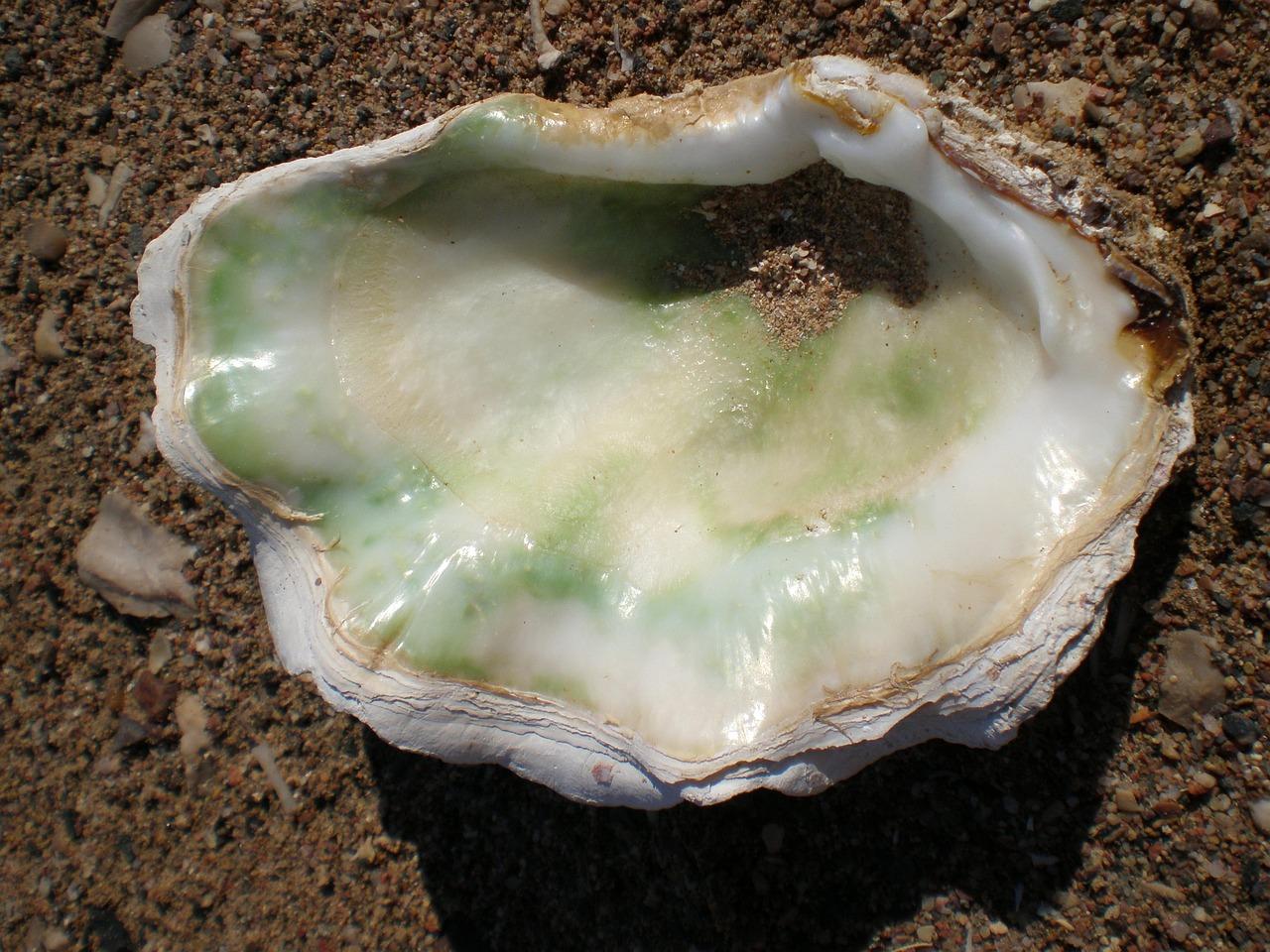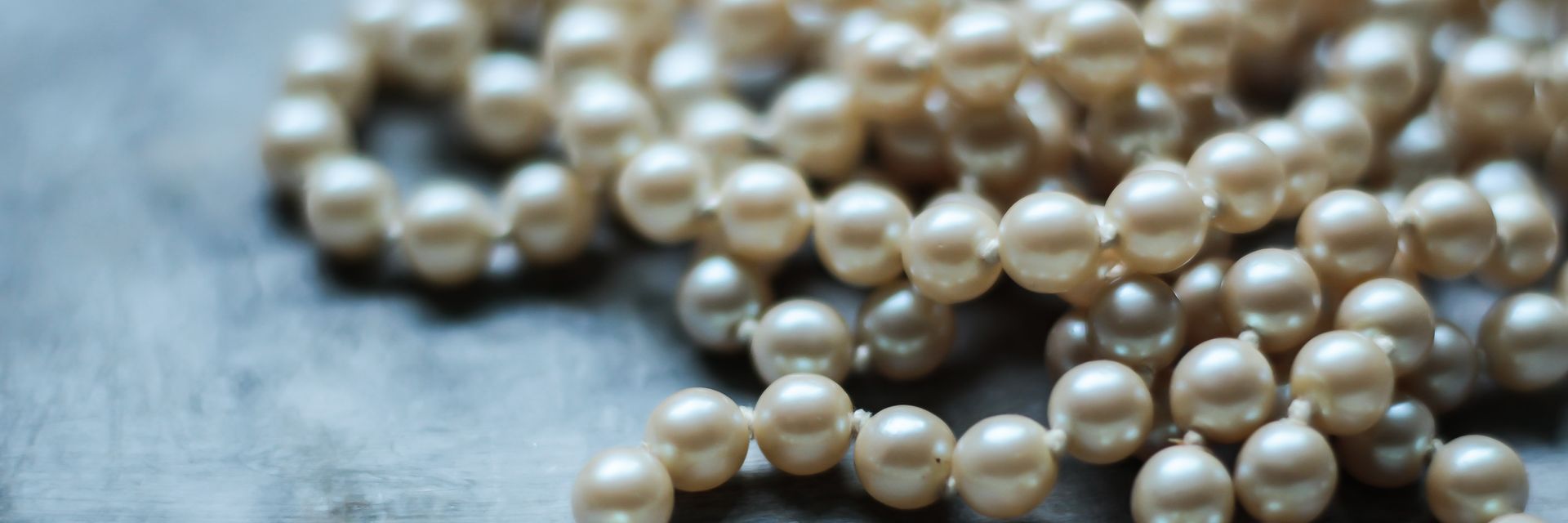“The pearls were accidents, and the finding of one was luck, a little pat on the back by God or the gods or both.” –John Steinbeck, The Pearl
◊
Pearls pop up across the timeline of human history in much the same way they are threaded along a necklace. From their practical origins as a mollusk’s defense mechanism to their role as a lucrative luxury, pearls have held essential roles in great works of literature and art, solidifying their place as a highly valuable commodity in the human consciousness. These natural phenomena have morphed into symbols of wealth that have captured human’s imagination for centuries. While their allure is all but baked into our minds, their origins retain a sense of mystery.
Where Do Pearls Come From?
Despite their status as emblematic of elegance, luxury, and beauty in the eyes of humans, all pearls begin as irritants. While most gemstones develop far below the Earth’s surface, pearls come into being on the ocean floor inside mollusks. Pearl generation is an evolutionary response across the mollusk phylum, so the variety of naturally occurring pearls is as diverse as the species of oysters and mussels that produce them. Saltwater oysters tend to produce spherical pearls, whereas those cultivated in freshwater environments are more varied in their shapes.
Watch MagellanTV's Pearl Islands: The Story of Bahrain’s Natural Gems
How Are Pearls Formed?
When mollusks create pearls, there is no biological intention to produce them to the aesthetic standards humans deem beautiful. The process of pearl formation begins when a foreign object, be that a bit of shell or a parasitic organism, infiltrates a bivalve mollusk’s shells. (Contrary to popular belief, however, grains of sand are not associated with pearl formation.) As filter feeders, oysters obtain nutrients by extracting phytoplankton and zooplankton from the nearly 50 gallons of water they filter per day, so it is commonplace for an oyster to intake a foreign particulate. When an irritant gets mixed up in the oyster’s food intake, the mollusk sets off a chemical reaction that encases the enemy, preventing it from taking over the oyster.
What Are Pearls Made Of?
To protect itself from invasive objects that can cause damage, a mussel or oyster will slowly secrete aragonite, a form of calcium carbonate, and conchiolin, a protein. The build-up of two materials eventually creates a material called nacre. Some scientists consider nacre to be the strongest material in the world.
Nacre has been a source of fascination for scientists for its incomparable strength, but it has recently been considered as a bone graft substitute thanks to its biodegradable nature.
Each aragonite brick forms a six-sided crystal that, when seen in the light, creates a lustrous sheen. The material known as “mother of pearl” is also made of nacre. Instead of forming concentric layers of nacre that would form a sphere, mother of pearl occurs when a layer of nacre is secreted on the inner lining of an oyster’s shell. It lacks the distinctive shape and ivory-pink coloration people consider synonymous with pearls, but all marine oysters and freshwater mussels have the right ingredients to build pearls. Whether they do or not is up to chance.

Mother of pearl coating a mollusk shell. (Source: Pixabay)
How Are Pearls Harvested?
Pearl harvesting is no easy business. As the natural production of pearls and the human likelihood of finding them are entirely random, pearls became a highly sought-after commodity, in part thanks to their unusual origins. Artifacts with pearl inlays indicate that human beings have harvested wild pearls as far back as the 4th century BCE. In both Southeast Asia and the Middle East, pearl harvesting provided fishermen with a source of income and created a commodity that would become symbolic of purity, power, and wealth.
To obtain pearls, divers would brave the seas of the Persian Gulf, the Red Sea, and the Gulf of Mannar. A team assembled on a sailboat would rotate between the roles of diving for oysters and pulling their comrades back up to the surface. By attaching themselves to weighted ropes with a basket to hold oysters, divers could descend to depths of up to 125 feet using freediving techniques passed down through generations of pearl divers.

Thursday Island pearl diver in his gear. (Credit: National Library of Australia Commons via Wikimedia Commons)
Wild pearl harvesting dates back as far as the 13th century BCE, when Chinese farmers began experimenting with the cultivation of pearls with freshwater mussels. Often, they would insert molds shaped like the Buddha inside of an oyster, resulting in oddly shaped, hollow pearls. Early in the 20th century, Japanese pearl cultivators patented a method of inserting lead and silver-based nuclei that consistently made spherical pearls. Today, some cultured pearls are bleached and buffed before heading to market, sparking widespread debate across the industry.
The process of harvesting pearls does often result in the death of the oyster, as getting to the pearl requires cutting through and separating the mollusk’s mantle. Not all goes to waste however, as the meat is consumed either by people or by other animals when dropped back into water. If a live oyster is brought to land, pearl farmers will recycle it to cultivate mother of pearl.
Why Are We So Obsessed with Pearls?
History demonstrates that the value of pearls transcends culture and time. In the first century BCE, Julius Caesar banned non-aristocrats from wearing pearls within the Roman borders. His lover, the “Queen of Kings,” Cleopatra, dissolved a pearl in vinegar and then drank it to prove how much she could spend on a meal. In today’s dollars, it’s estimated that her meal cost the equivalent of over $9 million.
Celebrities like Marilyn Monroe, Coco Chanel, Jackie Kennedy, and, more recently, Michelle Obama have used pearls to highlight their identity as glamorous fashion icons. As the cultivated pearl industry refined its methodologies and began mass producing pearls, prices dropped and demand skyrocketed. What was once a commodity defined by a diver’s luck had become an attainable status symbol all around the world. Prices of pearl jewelry today can range from 75 to tens of thousands of dollars, meaning while pearls can still fetch unbelievable price tags, average people are able to buy pearls and engage with the industry.

The Girl with the Pearl Earring by Johannes Vermeer, 1665 (Collection of the Mauritshuis, The Hague, via Wikimedia Commons)
The act of wearing them conveys a sense of power and authority. A tiny phenomenon in an oyster’s life is enough to create a profession for the divers who find them, enough for jewelers to establish standards of excellence, and enough for people around the world to pay inordinate sums for the privilege of wearing them around their necks. The obsession with pearls is reflected in great works of art, literature, and in the still-flourishing industry that thrives today.
How Will Climate Change Affect Oysters and the Pearl Trade?
While the human fascination with pearls continues to this day, changing environmental factors could put the future of pearl production at risk. Ocean acidification, caused by increasing levels of carbon dioxide in the atmosphere, lowers the pH of an oyster’s environment, meaning that the shells and nacre they produce are weaker. A weaker pearl is more susceptible to being cracked. While a more fragile pearl could be considered more valuable for its fragility, a broken pearl is little more than shell shards. It should be noted, however, that scientists have discovered that increased water temperatures mitigates the weakening effect of acidification.

A pearl diver with an oyster basket in Japan in 2005. (Source: Wikimedia Commons)
Pearl farming has positioned itself as essential economically for humans and ecologically for marine habitats. In fact, the farming of pearls has become a sustainable practice, especially in comparison with other gems that are mined. Research indicates that the presence of pearl farms can increase fish abundance in coral reefs and does not seem to negatively affect the preexisting ecosystems.
Coral reef bleaching due to changes in water temperature, pollution, and excessive sunlight exposure threatens many of the world’s most vibrant underwater habits. Reefs also fuel tourism in many island nations that rely on the influx of visitors to sustain their economies. Responsible pearl farming can help support coral reefs and supply local economies with an auxiliary source of income as industries are forced to adapt to a changing world.
Want to Learn About the Story Behind the World’s Finest Pearls and Where They Come From?
For as long as humans have been enticed by the beauty of pearls, we have been willing to go to great depths to be able to call them our own. Their sale has defined cultures, entrenched castes, and established a luxury market that reaches to some of the most beautiful but overlooked corners of the Earth. For a deeper dive into the traditional art of pearl harvesting and what it has become today, check out Pearl Islands: The Story of Bahrain’s Natural Gems on MagellanTV.
Ω
Daisy Dow is a contributing writer for MagellanTV. She also writes for Local Life magazine. Originally from Georgia, she graduated from Kenyon College with a degree in philosophy and studio art. She now lives in Chicago.
Title image source: Wikimedia Commons

